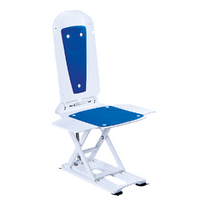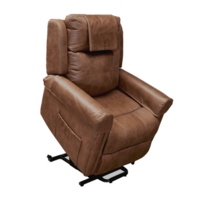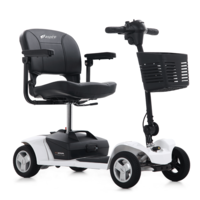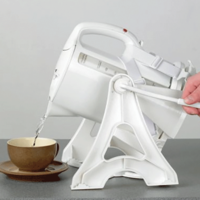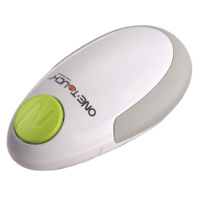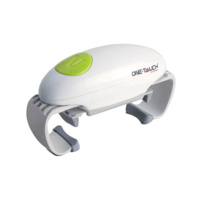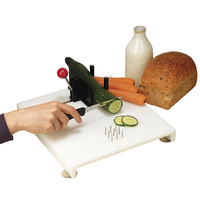Making Cooking Easier For People With a Disability
Cooking and preparing food can be particularly challenging for people with a disability. Kitchens are often not designed to accommodate those with physical limitations such as standing, reaching or using one side of the body. While kitchen equipment and even certain ingredients can prove challenging to use if someone has a disability.
But cooking and preparing food is one of the most important skills a person can have. Beyond the nutritional benefits of a home-cooked meal, being able to eat whatever and whenever you want also provides independence. And with the right techniques and equipment, cooking can become an enjoyable and even creative pursuit.
Simplify meal preparation 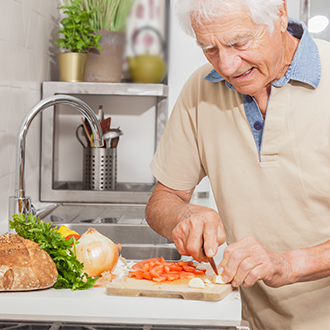
Meal preparation is helpful for anyone who wants to save time and effort in the kitchen – not just people with a disability. Chopping up a batch of vegetables to store in the fridge or freezer, or making an extra serve to have leftovers on hand can help for those days when you don’t want to bother with cooking from scratch.
When it comes to cooking with a disability, keeping this simple is often best. While learning new recipes can be a fun way to spend time, it’s helpful to have a few go-to recipes that you can prepare with little effort for those times you just want to get in and out of the kitchen.
Also, consider all the other steps that go into making a meal. Grocery shopping can be tiring, so take advantage of delivery options when you can – and not just from the major supermarkets. Independent grocery stores and farmers cooperatives will often offer delivery and you can take advantage of fresher produce and lower costs.
Kitchen setup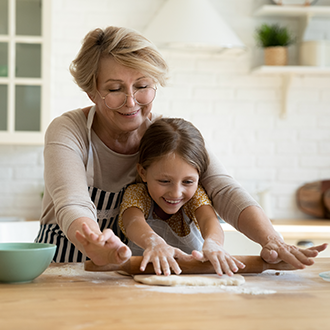
Setting up your kitchen properly can make all the difference when it comes to cooking for someone with a disability. While changing the design and layout of your kitchen to accommodate your specific needs might be preferable – it’s not always an affordable or practical solution.
Here are a few of the steps you can take to make cooking easier and less time consuming:
- Start by reducing the clutter in the kitchen to make it easier to find the things you need.
- Remove anything you don’t need from the countertop to leave more room for preparation.
- Use pull out drawers, stackers and smart storage options to make it easier to find what you need.
- Identify the equipment you use regularly and consider keeping it on a bench or rolling cart.
- If you’re in a wheelchair or find it difficult to stand for long periods, use a table or low bench to prepare food.
- Make sure you have enough overhead lighting for food preparation tasks. Strip lighting placed underneath overhead kitchen cupboards is a simple solution.
Kitchen aids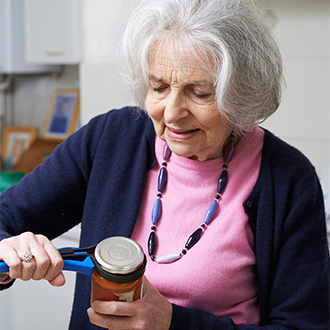
Cooking even a simple meal requires energy that some people do not always have. Chopping, stirring, opening jars and moving items from one place to another all takes time and physical effort – even more so for someone with limited mobility or a chronic illness.
Kitchen aids can help to reduce the effort required to prepare and cook food. This is equipment that has been designed and adapted over time to help with some of the standard kitchen tasks.
You’ll find an extensive range of kitchen equipment for almost every type of food preparation task. Many of these can be found in a regular kitchenware store and while they aren’t always specifically designed for people with a disability, they can make things easier. Think food processors for dicing and chopping, a garlic peeler to solve that fiddly job, and rocking knives for cutting, among other tools.
Of course, Mobility HQ also provides more specialised equipment that’s designed to meet the needs of people with limited mobility. Adaptive kitchen aids make it easier to handle regular kitchen preparation tasks like opening jars and cans, chopping food and pouring from the kettle.
Find out more about our range of kitchen aids and explore your options with the team at Mobility HQ.

















